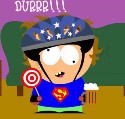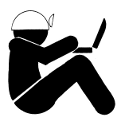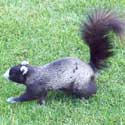margin of error/backsights
Moderator: Moderators
11 posts
• Page 1 of 1
margin of error/backsights
Just wondering what everyone considers an acceptable margin of error, i.e. how close do you want your frontsight and backsights? Also, in all the survey I've done we've always used backsights but some people don't for a variety of reasons. Just wondering what you do. My usual survey partners and I try to work within 1/2 degree, or sometimes a degree of error if the passage is particularly brutal. We always backsight.
-

chh - NSS Hall Of Fame Poster
- Posts: 522
- Joined: Oct 4, 2005 3:21 pm
- Location: asheville, nc
- Name: caleb
- NSS #: 55745
We also always backsight and use the same standards for degree of error. Do it right the first time, so you don't have to come back later, is what we say.
Scott McCrea
SWAYGO
SWAYGO
-

Scott McCrea - Global Moderator
- Posts: 3198
- Joined: Sep 5, 2005 3:07 pm
- Location: Asheville, NC USA
- NSS #: 40839RL
- Primary Grotto Affiliation: Flittermouse Grotto
We have always used backsights at Mammoth Cave (since the 70s). This has proven to be good practice, and an important tool to catch blunders.
We backsight both the inclinometer and the compass, striving for less than one degree variation. If the conditions are "good", we try to get down to less than one half degree.
Sometimes, either the backsight or foresight may not be practical to shoot. In these cases, we double-shoot from one direction, making sure we reset our position between each of the compass and/or clinometer reading (helps catch a repeated error).
We augment this with a compass course to account for differences in how instruments read, and also to provide correction values (declination + variation) for true north and true horizontal. For us, a course is important: Suuntos vary by up to a couple degrees (inclinometers by perhaps a degree), and declination changes over time are substantial. And, the course also allows us to use more than one set of instruments with equally good result.
Takes a little longer, but sketching is most often the gate anyway for survey speed.
Interestingly, this exposes the other blunder sources: mis-tapes, mis-ties, and reversals. The latter is startlingly common, with mis-ties happenning more often than we would expect, too. Of course, it is hard to catch mis-tapes, but based upon how often I do spot them, I am sure there frequency is high, also.
We backsight both the inclinometer and the compass, striving for less than one degree variation. If the conditions are "good", we try to get down to less than one half degree.
Sometimes, either the backsight or foresight may not be practical to shoot. In these cases, we double-shoot from one direction, making sure we reset our position between each of the compass and/or clinometer reading (helps catch a repeated error).
We augment this with a compass course to account for differences in how instruments read, and also to provide correction values (declination + variation) for true north and true horizontal. For us, a course is important: Suuntos vary by up to a couple degrees (inclinometers by perhaps a degree), and declination changes over time are substantial. And, the course also allows us to use more than one set of instruments with equally good result.
Takes a little longer, but sketching is most often the gate anyway for survey speed.
Interestingly, this exposes the other blunder sources: mis-tapes, mis-ties, and reversals. The latter is startlingly common, with mis-ties happenning more often than we would expect, too. Of course, it is hard to catch mis-tapes, but based upon how often I do spot them, I am sure there frequency is high, also.
Roppel Caver guy
- Roppelcaver
- Prolific Poster
- Posts: 158
- Joined: Sep 4, 2005 11:23 pm
Roppelcaver wrote:Sometimes, either the backsight or foresight may not be practical to shoot. In these cases, we double-shoot from one direction, making sure we reset our position between each of the compass and/or clinometer reading (helps catch a repeated error).
this particular problem occured at the very end of a survey about a month ago. the last shot in a passage was down a very narrow, awkward passage. it was next to impossible to get the person at the other end into position to shoot back, so we decided to shoot the forntsight twice. i ame up with the idea that, in cases like that, to have the sketcher shoot the shot as the second person, using the second set of insrtuments.
anyway, we try to keep it to within a degree. which leads to the amusing result where in gently dipping passage, both clinometer shots can read +.5 degrees and still be correct!!!
John
-

hewhocaves - NSS Hall Of Fame Poster
- Posts: 716
- Joined: Sep 5, 2005 9:43 pm
- Location: Morgantown WV
- Name: John Tudek
- NSS #: 36021
- Primary Grotto Affiliation: MonGrotto
Sometimes, either the backsight or foresight may not be practical to shoot. In these cases, we double-shoot from one direction, making sure we reset our position between each of the compass and/or clinometer reading (helps catch a repeated error).
We augment this with a compass course to account for differences in how instruments read, and also to provide correction values (declination + variation) for true north and true horizontal. For us, a course is important: Suuntos vary by up to a couple degrees (inclinometers by perhaps a degree), and declination changes over time are substantial. And, the course also allows us to use more than one set of instruments with equally good result.
Ditto on the double shots if backshot is not practical. We usually account for true north at the plotting stage. And, I've noticed the same variances with the Suunto devices.
I'm not sure I understand what you mean by a compass course. Could you explain that?
-

chh - NSS Hall Of Fame Poster
- Posts: 522
- Joined: Oct 4, 2005 3:21 pm
- Location: asheville, nc
- Name: caleb
- NSS #: 55745
Suuntos, as you observed, vary significantly. To resolve that we set up a compass course.
A compass course can be as simple as two stakes in the ground that are used to determine the variation between instruments. For short-term projects, this is usually adequate.
In our case, our two "stakes" are concrete posts that are precisely level with each other, and we have done a star shot to determine the exact bearing of the course. The course, of course, can be on an arbitrary bearing (and should to prevent reading biad). The exact bearing is not broadcast -- again to prevent reading bias.
Use is simple. Read the instruments on the course: the compass readings should agree pretty much right on; the inclinometer readings should agree also (e.g., +1/+1 could be correct). Record these in the book. Don't tolerate sloppiness here.
At home, determine the correction and use this for the data.
We have had the hardest time with reader bias with clinometers. Even though the course is level, people will "try" to make in inclinometer agree (recording +0.5/-0.5 in the book, which is not right).
The course is also a good test for sticky pivots, which is not uncommon. The clinometer seems to have sitcky pivots more than compasses; we start with the instrument held in a high positive orientation, then bring it to "level" to read, then repeat from a high negative position. Inclinometers with sticky pivots will fail this test.
Around Mammoth Cave, real declination versus USGS calculated has a substantial difference, and this also varies over time. In big caves, this is a significant variable (easpecially long, multi-year projects) and needs to be carefully considered.
A compass course can be as simple as two stakes in the ground that are used to determine the variation between instruments. For short-term projects, this is usually adequate.
In our case, our two "stakes" are concrete posts that are precisely level with each other, and we have done a star shot to determine the exact bearing of the course. The course, of course, can be on an arbitrary bearing (and should to prevent reading biad). The exact bearing is not broadcast -- again to prevent reading bias.
Use is simple. Read the instruments on the course: the compass readings should agree pretty much right on; the inclinometer readings should agree also (e.g., +1/+1 could be correct). Record these in the book. Don't tolerate sloppiness here.
At home, determine the correction and use this for the data.
We have had the hardest time with reader bias with clinometers. Even though the course is level, people will "try" to make in inclinometer agree (recording +0.5/-0.5 in the book, which is not right).
The course is also a good test for sticky pivots, which is not uncommon. The clinometer seems to have sitcky pivots more than compasses; we start with the instrument held in a high positive orientation, then bring it to "level" to read, then repeat from a high negative position. Inclinometers with sticky pivots will fail this test.
Around Mammoth Cave, real declination versus USGS calculated has a substantial difference, and this also varies over time. In big caves, this is a significant variable (easpecially long, multi-year projects) and needs to be carefully considered.
Roppel Caver guy
- Roppelcaver
- Prolific Poster
- Posts: 158
- Joined: Sep 4, 2005 11:23 pm
Roppel Caver,
Ok, that's pretty much what I thought you meant. After some difficulties with compass readings in one of the last caves I was working on we did the very same thing outside the bunkhouse we were staying in using the posts marking the different camping spots as our course markers. We didn't do a star shot, but our book keeper at the time recorded the differences. It was only a three person team and the two "shooters" read all the instruments on several different points at varying length, bearing, and inclination. The book keeper noted the differences and took them into account (not all the instruments were of the same make or manufacturer). Some instruments were not used because they just didn't jive.
Kinda makes me want to set up a course around here with a star shot so we can check our instruments more routinely.
I always look at the motion of my clinometer as well to make sure everything is smooth and not sticky. Sticky instruments are downright aggravating.
Ok, that's pretty much what I thought you meant. After some difficulties with compass readings in one of the last caves I was working on we did the very same thing outside the bunkhouse we were staying in using the posts marking the different camping spots as our course markers. We didn't do a star shot, but our book keeper at the time recorded the differences. It was only a three person team and the two "shooters" read all the instruments on several different points at varying length, bearing, and inclination. The book keeper noted the differences and took them into account (not all the instruments were of the same make or manufacturer). Some instruments were not used because they just didn't jive.
Kinda makes me want to set up a course around here with a star shot so we can check our instruments more routinely.
I always look at the motion of my clinometer as well to make sure everything is smooth and not sticky. Sticky instruments are downright aggravating.
Your words of caution are no match for my disaster style!
-

chh - NSS Hall Of Fame Poster
- Posts: 522
- Joined: Oct 4, 2005 3:21 pm
- Location: asheville, nc
- Name: caleb
- NSS #: 55745
Roppelcaver wrote:Around Mammoth Cave, real declination versus USGS calculated has a substantial difference, and this also varies over time. In big caves, this is a significant variable (easpecially long, multi-year projects) and needs to be carefully considered.
Ah, one of the heavy burdens you must face to survey in the longest cave. (grin). just pulling your leg.
I honestly don't think I've ever done a project that's taken more than a year to complete. Though, we're working on that now, so hope-hope. as the guy collecting the info, it's something I'll have to keep in mind when (if?) we do find the big cave.
regarding sticky wickets, my first clinometer suffered from this after several years, resulting in having to get a new one. i still have the old one, and have hopes for rehabilitaing it some day. but it's been back burnered considerably (and more or less forgotten).
John
-

hewhocaves - NSS Hall Of Fame Poster
- Posts: 716
- Joined: Sep 5, 2005 9:43 pm
- Location: Morgantown WV
- Name: John Tudek
- NSS #: 36021
- Primary Grotto Affiliation: MonGrotto
The declination rate of change around Mammoth cave is about 0.2 degrees per year. Not a lot for a project that lasts a year, but over my tenure there this has amounted to over five degrees. Even the difference between measured and calculated (based upon USGS) changes, and is not insubstantial. The Mammoth Cave area has some anomalous influences that affect the declination in a relatively localized area.
Fortunately, with our compass course, we don't have to worry about that anymore and this is all are accounted for by each compass shot on the course (declination AND variation).
Fortunately, with our compass course, we don't have to worry about that anymore and this is all are accounted for by each compass shot on the course (declination AND variation).
Roppel Caver guy
- Roppelcaver
- Prolific Poster
- Posts: 158
- Joined: Sep 4, 2005 11:23 pm
Our caves are so bloody cold we just survey once, no backsights, and hopefully never have to go back and do it again, ever.
As far as error margins, we adhere to BCRA standards; if your accuracy slips, so does the grade. Most of use go for BCRA 5 which is + or - 0.5 degrees.
As far as error margins, we adhere to BCRA standards; if your accuracy slips, so does the grade. Most of use go for BCRA 5 which is + or - 0.5 degrees.
-

ian mckenzie - NSS Hall Of Fame Poster
- Posts: 549
- Joined: Sep 16, 2005 9:40 am
- Location: Crowsnest Pass, Canada
- Primary Grotto Affiliation: Alberta Speleological Society
The people I survey with use +/- 2 degrees.
Several different groups use that as the requirement.
Several different groups use that as the requirement.
Barbara Anne am Ende
"Weird people are my people."
"Weird people are my people."
-

Squirrel Girl - Global Moderator
- Posts: 3198
- Joined: Sep 5, 2005 5:34 am
- Location: Albuquerque, NM
- NSS #: 15789
11 posts
• Page 1 of 1
Return to Survey and Cartography Forum
Who is online
Users browsing this forum: No registered users

